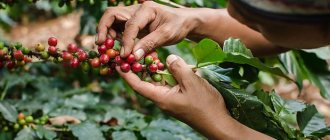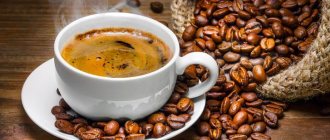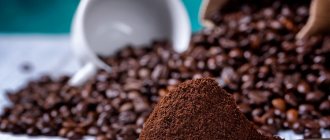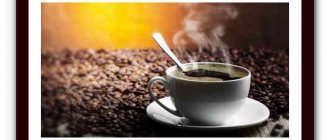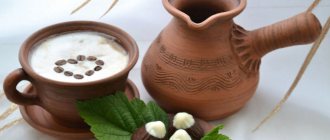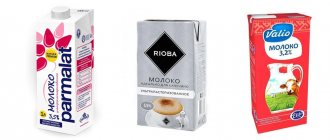Blend vs Single Origin
The concept of SINGLE ORIGIN (single origin) means coffee beans collected from one region, one farm, while BLEND is a mixture of different coffee varieties. The term micro lots is used to refer to special varieties of coffee specially grown within a small farm or on a specific area of a plantation.
MICROLOT is one type of grain, collected from one farm, processed in one way. approx. Editorial staff
The question arises: is such a division necessary for the average coffee drinker? Yes, because the taste of coffee is affected by where and in what conditions it is grown. As we will now see, country, region, farm, processing method, variety of coffee tree and much more affect the taste and aroma of our drink.
SINGLE ORIGIN is a coffee bean collected from one farm, processed in one way and roasted according to one profile. Typically, these are high-quality coffees with unique flavor characteristics that roasters do not want to overshadow or mix with other varieties.
BLEND (coffee blend) is created when a mixture of two coffee varieties gives a better taste than the same two varieties separately and in order to achieve taste stability. Let's say there is a light, fruity Ethiopia, but it lacks a little body. (For example, blends are often used to make espresso)
While SINGLE ORIGIN is generally more prized by specialty drinkers (and costs more) than BLEND, they can both be excellent. There are bad SINGLE ORIGIN and good BLEND, they just have different concepts. Try it and don't give up on coffee just because it's a blend of beans from three countries.
At the same time, immerse yourself in the world of SINGLE ORIGIN by tasting coffee from different regions. Take Guatemala, which is known for its acidity, balance and spicy notes, then compare it to coffee from Rwanda, which is known for its sweetness and full body. And then, try samples from two different regions of Colombia - say, Nariño and Santander. Get to know the origins and characteristics of the coffees you love.
But remember, just because a country tends to have a certain flavor of coffee, doesn't mean all of its coffee will match that flavor. Be open to new discoveries!
BREAKFAST BLEND (ESPRESSO MIXTURE of two varieties of Arabica Brazil Fine Cup + Ethiopia Sidamo) www.coffeeproject.ru
Roasting degree
There are many different names to determine the type of roast: light, medium, Viennese, City plus, filter, blonde...
You must understand that roasting is a process that unlocks the existing flavor and aroma potential of coffee beans. However, if you roast the grain incorrectly, it will introduce additional unnecessary flavors that will overwhelm the characteristics of the grain. Undercooked grain will be grassy and sour. Over-roasted coffee will taste bitter, smoky, and unpleasant.
Specialty coffee connoisseurs prefer light roasts, but the fact is that the best roast depends on the bean itself, the preparation method and, of course, consumer preferences. Let's see why.

Two packs of single origin coffee: KENYA BARAGWI and GUATEMALA – SAN FLORENCIO, roasted under filter www.aprilcoffeeroasters.com ©Ana Valencia
Light roast
Also known as cinnamon, blonde, City and City Plus - primarily for medium-light roasts.
These profiles are known to highlight fruity and acidic notes in flavor and aroma and are therefore suitable for coffees that already have these characteristics. Some people argue that light roasts are less sweet, but this is not always the case. Because high-quality specialty coffee is prized for its complex profile, many roasters opt for a light or medium-light roast to highlight this.
Dark roast
In other words, Vienna or Light French, while Full French and Italian are considered very dark roasts.
When you drink dark roast coffee, you can taste the roasting process itself—roasty, bitter, and full-bodied. Dark roast has a bad reputation among specialty coffee drinkers and is sometimes used to hide imperfections in the bean.
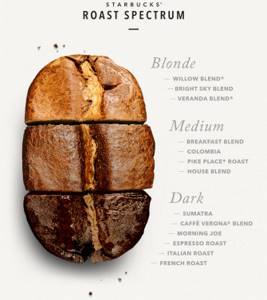
Range of roast types ©Starbucks
Medium roast
Also known as Full City, the slightly darker-than-medium roast is called Full City Plus.
Why did we put the description about medium roast after light and dark, instead of in the middle? Because a medium roast is largely defined by what it isn't—it's neither light nor dark. Instead, think about balance, body, profile, characteristics that don't overshadow the coffee's natural flavors and aromas.
Espresso, Filter and Omni
espresso roasts are slightly darker than filter . (This is the difference between dark and light roasts.) Omni roasting, in turn, is intended for both filter coffee and espresso.
So why are the roast profiles different for espresso and filter? Because espresso is an intense brewing method well suited for sweet, full-bodied coffee, while filter coffee is generally known for its complexity and uniqueness.
What you need to know before buying coffee beans
Coffee connoisseurs know that the most delicious and high-quality drink can only be prepared from fresh beans. But on the shelves of modern stores you can find many varieties of bean coffee, so it will be very difficult for a beginner to choose the right bean option for themselves. There are several important criteria for choosing coffee beans that you need to know about before purchasing.
Production date and roasting date
- The fresher the grains are, the better.
- You can experience the full taste and aroma of the drink only if it is made from freshly roasted beans. Therefore, if the roasting date is indicated on the selected product, be sure to pay attention to it.
Roasting degree
- Light roasting gives the drink a softer taste with slight sourness and a subtle aroma. This product goes well with milk, so cappuccino, latte and other similar types of drink are prepared from it.
- The medium degree of roasting gives the drink a stronger aroma and a sweet and sour taste with notes of caramel.
- Dark roasting makes the coffee taste as rich as possible. The sourness almost disappears.
Variety
There are only two types of coffee beans. These are Arabica and Robusta. Arabica has a mild taste with a slight sourness. Robusta has a richer, slightly bitter taste.
Arabica is most often called an elite variety.
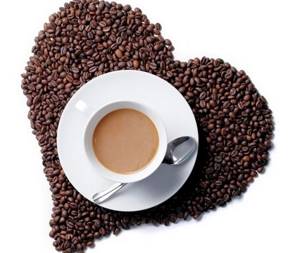
Manufacturer country
In many ways, the taste characteristics of coffee beans depend on the geographic region in which they were grown:
- Colombia and Costa Rica. Coffee with a pleasant, perfectly balanced taste, which contains light sourness and fruity notes, is grown here.
- Brazil. The region grows predominantly the Robusta variety, which has an intense flavor with chocolate or nutty notes.
- Ethiopia. The taste of coffee made from these beans can be described as rich and “thick”, with notes of strawberries or blueberries.
- Kenya. Kenyan grains give the drink a bright aroma and taste, with notes of black currant.
- Indonesia. Coffee from this geographic region has a spicy aroma and an unsweetened cocoa aftertaste.
- Hawaii. Beans grown in Hawaii give the drink a sweetish taste and floral aroma.
Category
There are three different categories of coffee beans that determine their quality and taste.
Specialty
To obtain beans of this category, the coffee tree must be grown high in the mountains, in fertile soil and always in good weather. The harvest of ripe berries must be collected manually and processed according to all the rules. The crop grown and harvested under such conditions is called “grains with potential.”
To qualify for the specialty category, beans must undergo two stages of testing. At the first stage, the number of defects is checked; at the second, the drink is prepared and its taste is assessed by special tasters. If few defects are found, and the taste receives the highest possible rating from experts, then the grains are classified as specialty.
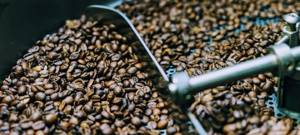
Commercial
If a coffee harvest fails to qualify for the specialty category, it will most likely end up in a lower category called commercial. This kind of cafe most often ends up on the shelves of our stores. Commercial coffee is also of fairly high quality, but its taste and aroma are not as deep and rich.
Commercial coffee is divided by quality level, which also depends on the growing conditions, harvesting method, taste characteristics and the number of defects. But there is no single classification for it, because each manufacturer labels the product differently. Therefore, the more information about the grains on the packaging, the better the quality of the finished drink.
Bezrodnoye
All grains that could not receive the specialty or commercial label automatically end up in the rootless category. Usually such a product is bought in large quantities by large companies. They mix different batches of product grown in different countries and obtain a homogeneous mass of grains with the same poorly expressed taste and aroma. Such coffee may be sold under a well-known brand, but since there is no information about the geographical region of cultivation, it is difficult to guess what quality drink it will produce.
Be sure to read: Time-tested products for coffee shops from Aliexpress
Before purchasing, it is worth considering that it is almost impossible to distinguish good commercial grains from a “rootless” product by smell without special training. The fact is that most people have long been accustomed to a drink of poor quality, and think that this is how it should be.
If desired, you can do home testing. If the espresso brewed from freshly purchased beans is easy to drink without sugar or cream and has a pleasant taste, then you have found a good commercial product.
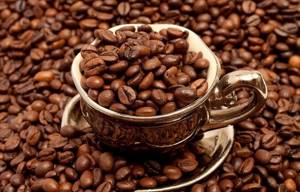
Daniil Lobadin
Co-founder and head of the family manufactory Lobadin Coffee Roasters
One word - tasting: this is the “golden” key to determining which coffee is the best! Everyone has their own unique taste preferences - the main thing is not to mindlessly follow what is “considered the best.” After all, this is even more interesting - if you can appreciate what is liked not by the majority, but by a few. The main thing is to understand for yourself what you really like and what you don’t like. If only there was a choice.
Oh, now we will contradict ourselves: we noticed that the more choice a person has, the more likely he is to refuse to choose at all: ah-ah, too many things! We came across this just when we started bringing cupping to the masses. You offer the buyer this kind of coffee and that kind of coffee, but in the end the person just gets confused and doesn’t want anything anymore.
We got out of the situation by making cupping sets. It turned out to be a very successful solution: a coffee lover chooses a theme, for example, chocolate or fruit, and receives four bags of coffee from Lobadin Coffee Roasters. So we are gradually introducing cupping and developing in customers not only an understanding of specialty, but also a love of experimentation. Now they tell us not: “Ah-ah, everything is complicated, stop explaining it to me,” but: “Okay, I’ve studied the coffee and milk topic, now I’ll delve into the topic of roasting differences, tell me in more detail.” Nice!
And let every coffee lover find the best varieties just FOR HIMSELF. And it doesn’t matter what kind of coffee it is
— Daniil Lobadin Co-founder and head of the family manufactory Lobadin Coffee Roasters
Processing methods
You can read more in our previous article.
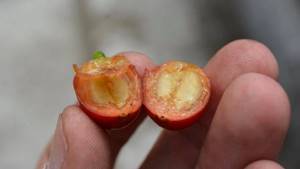
Cutaway coffee berry © Nicolas Rozental
Coffee is actually more than just a bean. It is the seed of the coffee berry, commonly called a "cherry" for its round shape and typical (but not always) bright red color when ripe. But removing the sticky fruit layer is not so easy; special equipment for depulping and subsequent fermentation is often used for this. These processes are called coffee processing, and the processing methods also affect the taste of the coffee. That's why it will be indicated on the coffee pack.
Washed or wet processing
The pulp is removed with water, then the grains are dried. This method does not greatly affect the taste of the coffee, which means you can taste the pure, natural taste of the bean.
Dry or natural method
The beans are slowly dried under the sun while still in the coffee cherry. This method is intended to produce a sweet and fruity taste. But if suddenly the drying is done poorly, the coffee may turn out to be of poor quality and unsatisfactory taste. But, as a result of proper drying, the coffee will be very tasty. It is also an environmentally friendly option.
Honey and half-wash method
Coffee cherries are dried with varying amounts of berry pulp on the coffee bean. The more pulp, the more sweetness and body there will be in the taste.
However, the best way to understand the difference in processing methods is to try it. Get washed and naturally processed coffee from the same region or, better yet, the same farm. Feel these differences for yourself in your cup.
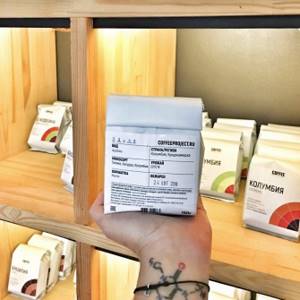
coffee COLUMBIA LA LUNA, washed processing of coffee berries, www.coffeeproject.ru
Which coffee grind is best for a coffee machine?
Grinding levels
For coffee machines, the degree of grinding of the beans is of great importance. There are five types:
- large (rough);
- average;
- small (thin);
- ultrafine;
- powdery.
Coarse grains have a size of 1 mm. Medium grind is universal.
Difference between Arabica and Rabusta
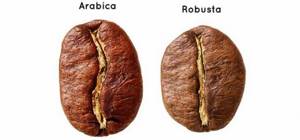
Arabica and Robusta are the main varieties. They differ in taste and fruit shape.
Arabica beans are large and round, have different flavors and low caffeine content. The yield of this variety is not very high.
Robusta grains are oblong. It is distinguished by richness, strength and bitterness. It contains a lot of caffeine. The height of the cream foam depends on its presence.
Manufacturers often mix these two varieties. The taste only benefits from this. The drink becomes velvety and rich.
What grinding degree is suitable for which coffee machine?
Grinding is done in different ways. The industrial method produces homogeneous coffee, but some of the aromatic substances are lost.
True fans of the drink prefer to grind coffee at home and in small portions. Electrical and mechanical devices can be used.
A Turkish mill will grind the beans into dust, which is ideal for Turkish coffee.
Coffee machines can have different functions. If possible, the grinding degree should be adjusted while the machine is turned on. The particle size of the grains can be increased or decreased using the slider.
After trying several grinding options, choose the best taste and use this setting constantly.
Coarse coffee particles are well retained in the filter. They are suitable for brewing in a French press, drip coffee maker or coffee pot.
For coffee machines, you can use coarse and medium grind coffee.
Fine and powdery grinding is prepared in a Turk. Extra-fine coffee is brewed in coffee machines that are designed for this purpose.
For a carob coffee maker, it is also better to take medium beans. You can make espresso in it. Coffee is poured into the machine's cone. You need to adjust the temperature and pressure.
A modern coffee machine is an espresso pod. It uses a compressed coffee tablet (pod). There is no need to adjust the grinding degree.
Attention! Standard coffee machines are designed to use medium-ground coffee.
Variety and grade
You can read more in our previous article.
Not all coffee trees are the same. The type and variety can have a significant impact on the final flavor of the cup, so let's take a look at the common varieties.
Specialty coffee
As a rule, this is Arabica , known for its aroma and delicious taste. Robusta is another common species; it has a stronger taste and contains significantly more caffeine. From time to time you may come across a less common species - Liberica .
Next come the varieties of Arabica : Caturra, Catuai, Typica, Geisha, Pacamara, Maragogipe...and many others. Bourbon tends to be sweet. Geisha typically has a light, tea-like body, a jasmine aroma and a complex, unique flavor.
Once you can feel the impact of processing on the taste of the cup, it's time to start understanding the varieties and varieties. Try washed Bourbon and Caturra from El Salvador. Then compare them to natural Bourbon from Rwanda. The beauty of specialty coffee is that each variety is truly unique. There are so many factors that influence the taste of a cup, and we as consumers can enjoy and appreciate each of them.
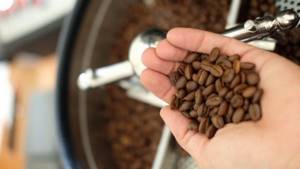
Freshly roasted coffee ©Nicolas Rozental
Rating of the best varieties of coffee beans
Now let's move on to specific brands that you should pay attention to when buying coffee beans.
Molinari Qualità Rosso
Qualità Rosso is a product of the Italian company Molinari, which produces coffee that belongs to the premium segment of the market. Qualità Rosso contains 75% Arabica and 25% Robusta, which gives the finished drink a tart aroma, a taste with notes of chocolate and honey and a delicate aftertaste. Goes well with milk.
Blasercafe Lilla e Rose
Lilla e Rose is a high quality Swiss product that is 80% Arabica and 20% Robusta. Roasting of beans is darker than medium. This gives the aroma of the finished drink floral, nutty and honey-caramel notes. Lilla e Rose also has a balanced, bright taste, in which bitterness and sourness complement each other perfectly.
Julius Meinl Wiener Mokka
Julius Meinl is considered the best Swiss coffee brand, which is known all over the world. Wiener Mokka is a single variety consisting of 100% Arabica beans. The drink made from it is strong and thick with the taste of chocolate and hazelnuts, as well as a pleasant tart aftertaste. The aroma of coffee contains notes of fresh baked goods and dried fruits.
Tasty Coffee Barista
Barista is the best product of the Russian roasting company Tasty Coffee. This is a mixture of several types of Arabica beans with a medium roast level designed for making coffee in an espresso machine. The finished drink has a balanced creamy taste with a honey aftertaste and a rich caramel aroma.
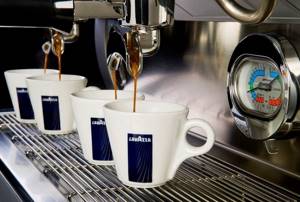
Lavazza Qualità Oro
Qualità Oro is a blend of several types of Arabica produced by the Italian company Lavazza. The finished drink has a rich aroma and taste with fruity, floral and honey notes. Qualità Oro is considered one of the best Arabica blends, and is therefore often considered the so-called “golden blends”.
Illy
Illy is an Italian manufacturer producing premium coffee. Its products are distinguished by high quality and variety of products. The most famous Illy coffee is a classic blend made from 9 different varieties. It produces a rich drink with a bright and deep taste.
Paulig
Finnish manufacturer Paulig produces Arabica blends with varying degrees of roasting or without roasting at all. The assortment is not too large, but everyone can find something suitable for themselves. The taste of the finished drink has a pleasant aroma and slight sourness. Paulig coffee is designed for the average buyer, so it can be found in most stores.
Be sure to read: Coffee - the idol of many or a veiled enemy
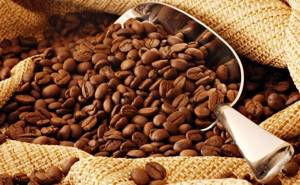
Pellini
Pellini is an Italian brand that produces only high-quality coffee. It is known and appreciated in many countries, but in Russia it is rare. Pellini coffee has a rich aroma, a bright, balanced taste and a pleasant long aftertaste. The product belongs to the premium class, but has an affordable price, for which many coffee lovers around the world love it.
Moscow coffee shop on shares
Moscow coffee shop on shares is considered one of the best brands of Russian coffee. The thing is that this company does not purchase ready-made grains, but grows its own product in Colombia and the Dominican Republic. For this reason, coffee is not cheap. But it also cannot be classified as an elite brand, since it is designed for the mass buyer.
Diemme
The products of this Italian company belong to the premium segment and are of high quality. Diemme produces blends made not only from Arabica. Italians often use robusta, which makes the finished drink quite strong, rich and aromatic. To produce its coffee, the company uses exclusively elite products, which is why the final cost increases greatly. This is perhaps the only disadvantage of Diemme, which coffee connoisseurs complain about from time to time.
Growing height
On some coffee packets you may see information about the altitude at which the coffee was grown, usually measured in meters above sea level.
So why should we care? Because the slower a coffee tree grows, the more time it essentially takes for the berries to become saturated with sugars, which contributes to a sweeter and richer taste of the drink.
When comparing two farms in the same region, the one higher up tends to have better climatic conditions. For this reason, the higher altitude at which coffee trees are grown is an indicator of higher quality coffee. But be careful, don't be fooled. After all, for example, at an altitude of 1100 meters in Brazil it will be cooler than in Ecuador.
You also need to take into account the influence of sea currents, wind, and so on. Take the Galapagos Islands, which are located on the equator at an altitude of only 200 meters above sea level and have a cool local climate that produces delicious coffee.
Growing height is useful information when considered in context. Use this when choosing coffee from one region, but don't write off varieties grown at lower altitudes until you've tried them. He may surprise you.

the packaging indicates the growing altitude of 1750 m above sea level, El Salvador coffee from Las Delicias farm, roasted by Smalltime Roasters ©Smalltime Roasters
Fair Trade, Direct Trade, Rainforest Alliance…
(Fair Trade, Direct Trade, Tropical Alliance)
There are many certifications in the coffee industry, and it can sometimes be difficult to understand what each one means.
First, let's look at the most famous of them: the FAIRTRADE certification system ( Fair Trade ). It means that grain producers (farmers) receive a certain amount in addition to the international price of coffee. However, this does not necessarily mean a living wage.
UTZ certification means that producers are trained in best farming practices to improve the quality and yield of coffee. As a result, farmers receive more income.
DIRECT TRADE certification system (direct trade). This is actually a trade model, not a certification program; however, many roasters who use this model will say that it provides consistency in production. It involves the purchase of grain by roasters directly from farmers. These coffees are typically of exceptional quality, and many roasters work with growers to provide additional feedback and support in improving the quality of the crop.
Typically, roasters pay much more than the international coffee price and often more than UTZ and Fairtrade farmers receive in the commodity market. However, some criticize this trading model, arguing that it is not regulated and can only be a marketing one. Unlike the Fairtrade and UTZ programs, in this case it is difficult to know how much the producer actually received for his crop.
Rainforest Alliance label means that the coffee has been grown in environmentally friendly conditions, minimizing damage to local forests and waterways. Similarly, Bird Friendly Coffee denotes organic coffee that supports the growth and restoration of local forests and, as a result, helps local wildlife thrive.
Cup of Excellence, Good Food Award…
On a pack of coffee you can find not only various certifications, but also quality awards.
Cup of Excellence is an award that determines the quality of green beans as presented by the manufacturer. This means that the roast profile is not taken into account at this championship when cupping samples and, in fact, many roastmasters (roasters) can offer their own roast profile.
Many producing countries have their own Cup of Excellence , so you may be able to see which variety has won the Cup of Excellence in Colombia, or you may find that a particular farm has won the Cup of Excellence in Burandii (Burundi Cup of Perfection). Also, some countries have national awards, such as “Best Pacarama” or “Brazilian Coffee of the Year”.
The Good Food award, on the other hand, is awarded in the United States for roasted coffee. In other words, only a specific variety presented by a specific roasting company can become a Good Food Award winner.
There are many more awards for coffee quality. But these two awards, perhaps the most famous and significant, demonstrate the starkest differences between them: one goes to the roasted bean, the other to the unroasted one.

Good Food Award, Ethiopia Ardi coffee roasted by: Huckleberry Roasters ©Huckleberry Roasters
There's so much information contained in a tiny coffee label that it can sometimes make your head spin. But remember, this is all to help you choose the best coffee. So go ahead: take your time! Compare processing methods and grain origins. Ask your barista for more information. Try new things to find out what you like.
Because that's how you learn more about your favorite drink.
Which coffee beans are best for a coffee machine?
Types and varieties of coffee beans
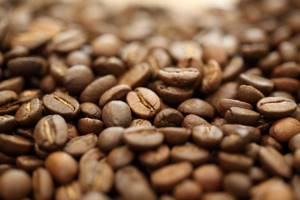
Different people have different taste preferences. Comparative characteristics will help you choose the product with the best taste for yourself and the most suitable for the coffee machine.
Grains can be purchased packaged or by weight. It is worth assessing the aroma and appearance of the loose product. The grains should have an oily sheen and be of uniform size.
Coffee machine owners often choose the following varieties: Jardin, Paulig, Kimbo, Guttenberg, Malongo.
Jardin is presented in a large assortment. The brand has different roasts. The price is quite affordable.
Paulig is mixed only with Arabica. And the Guttenberg company uses robusta in different proportions.
Kimbo has no bitterness. It has a pronounced coffee taste. Malongo is expensive, but the price matches the quality.
Coffee machine owners often prefer Arabica. The type and taste of these grains depend on the place of cultivation. There are different varieties of Arabica: Barbon, Catura, Aramosa, Typica, Mocha.
Robusta varieties include Ambri and Quilu. Coffee, called single-origin, grows in a specific area of the country. The pack must contain grains from the same collection. It's mostly Arabica.
The most expensive option is beans from Puerto Rico. There are other varieties that are suitable for use in a coffee machine.
The most popular bean coffee producers
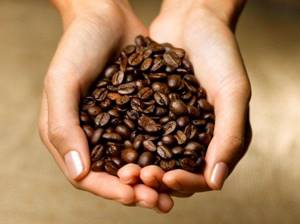
There is coffee on sale that is grown in a variety of places on Earth. These could be the islands of the Caribbean, Mexico, Colombia, Brazil, Hawaii, etc.
Grains brought from the Caribbean are fragrant and tasty. Many manufacturers like them for reasonable prices.
Most of the products on the world market are Brazilian products. It has high taste qualities.
Coffee beans from Mexico and Colombia are inexpensive and popular. Expensive varieties are grown in the Hawaiian Islands. The Arabic drink may taste special. He has his own connoisseurs.
How to choose coffee for your car among such a variety of producing countries and varieties.
In our country, the most popular are “Wintergreen”, “LavAzza”, “Malongo”, “Bristol”, “Musetti” and others.
You can find a recommended list of varieties in the machine manual.
How to understand whether the selected coffee is suitable for a particular machine
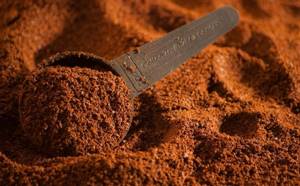
If the coffee is chosen incorrectly, the machine may break down. For example, according to the instructions, you can use ground coffee. The grind size is important here. If, when loading finely ground coffee, the coffee comes out in thin streams, then the chambers of the brewing mechanism are clogged.
Machine grinders can rust over time. This means that grains that were too oily were used.
If the machine has ceramic millstones, then too hard raw materials will not be suitable. There should be no extraneous noise during operation. It is possible due to incorrectly selected grains.
High humidity products may cause damage to the coffee machine. The grains should not be too hard or with foreign impurities, otherwise it may break.
Fragrances can also cause harm to the device. Their substances gradually corrode the plastic of the container.
The grains must be dry. Otherwise, the grinding mechanism will suffer. When choosing a product, look at what packaging it comes in. Cheap plastic containers should be treated with caution.
